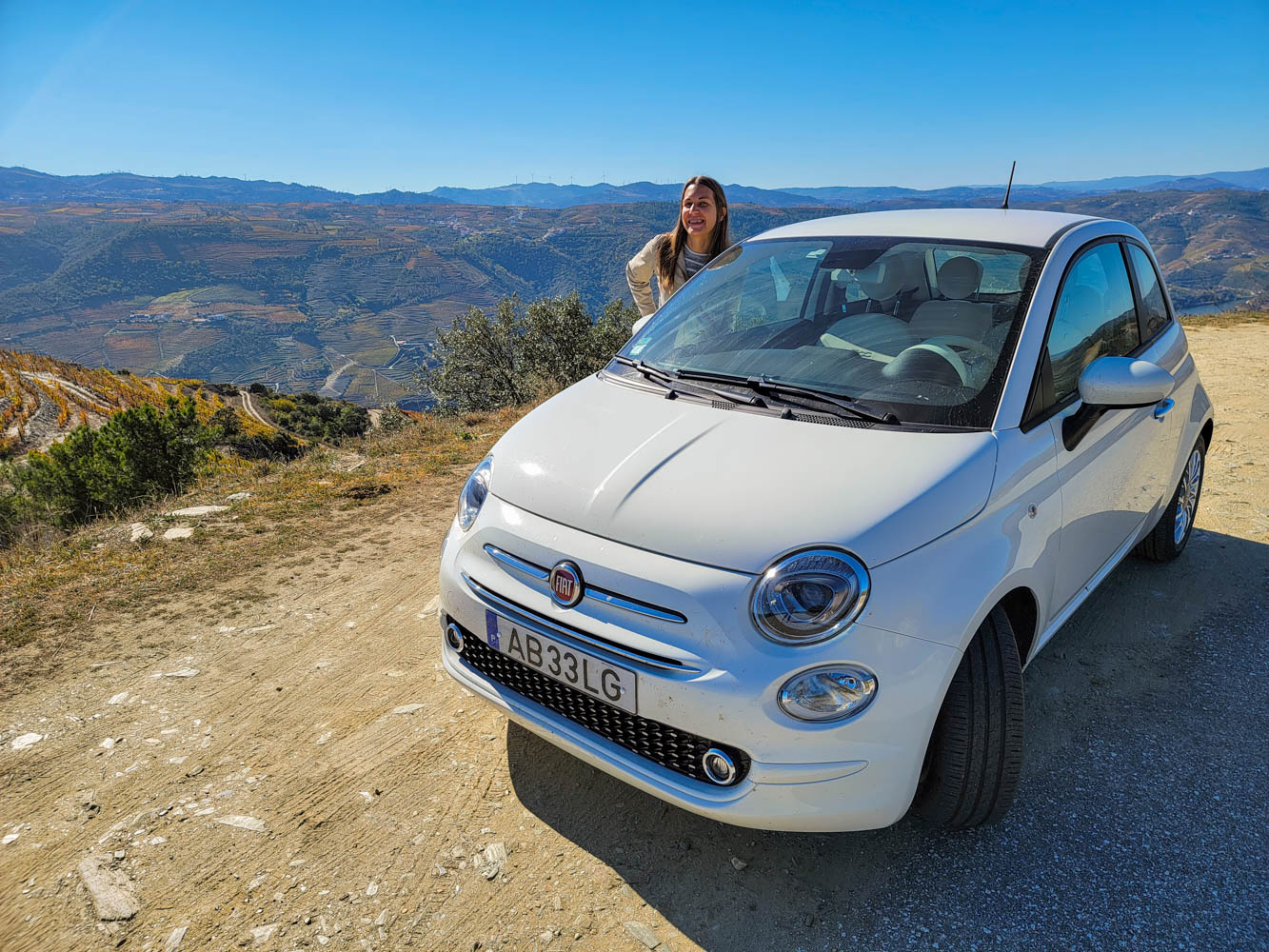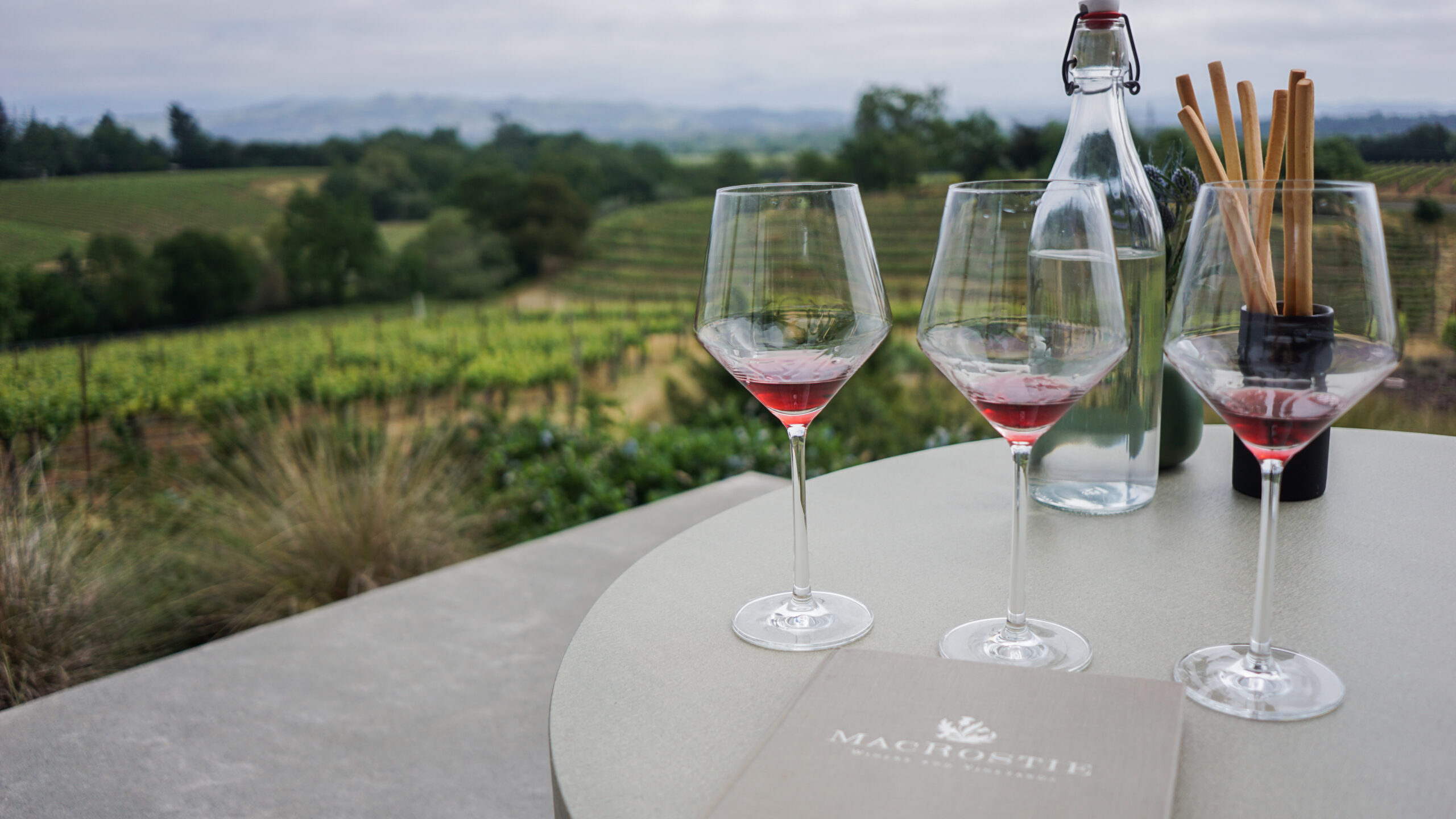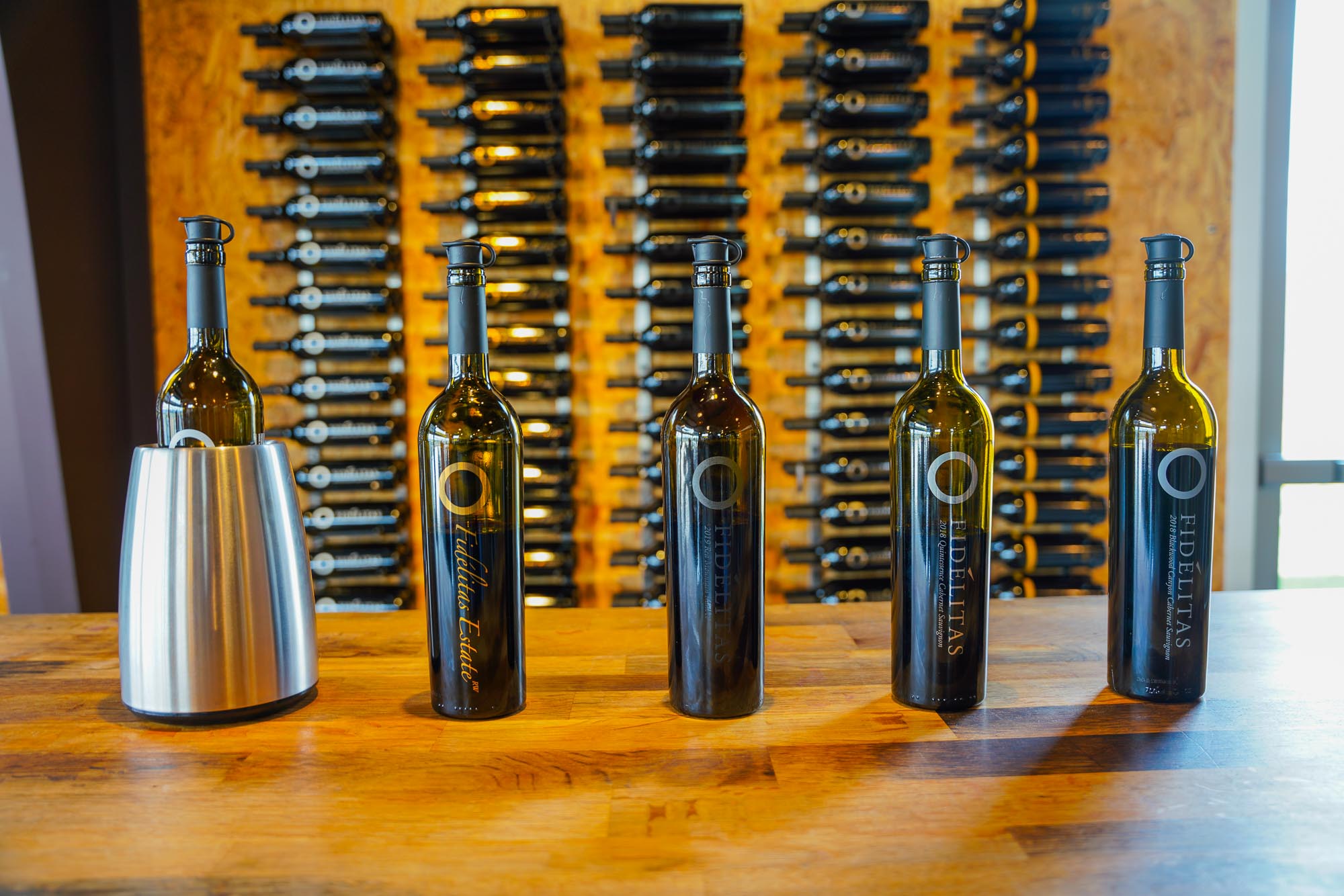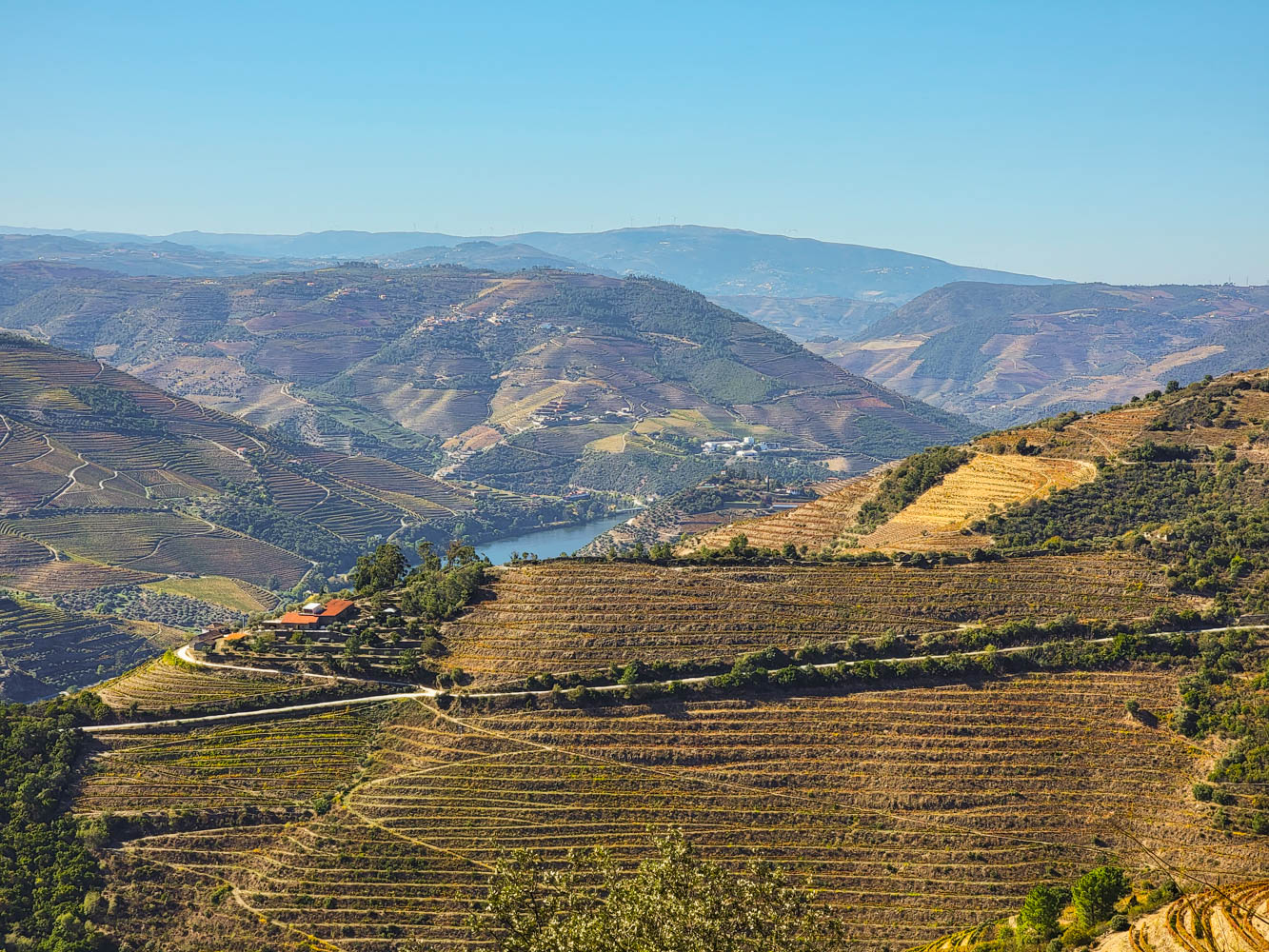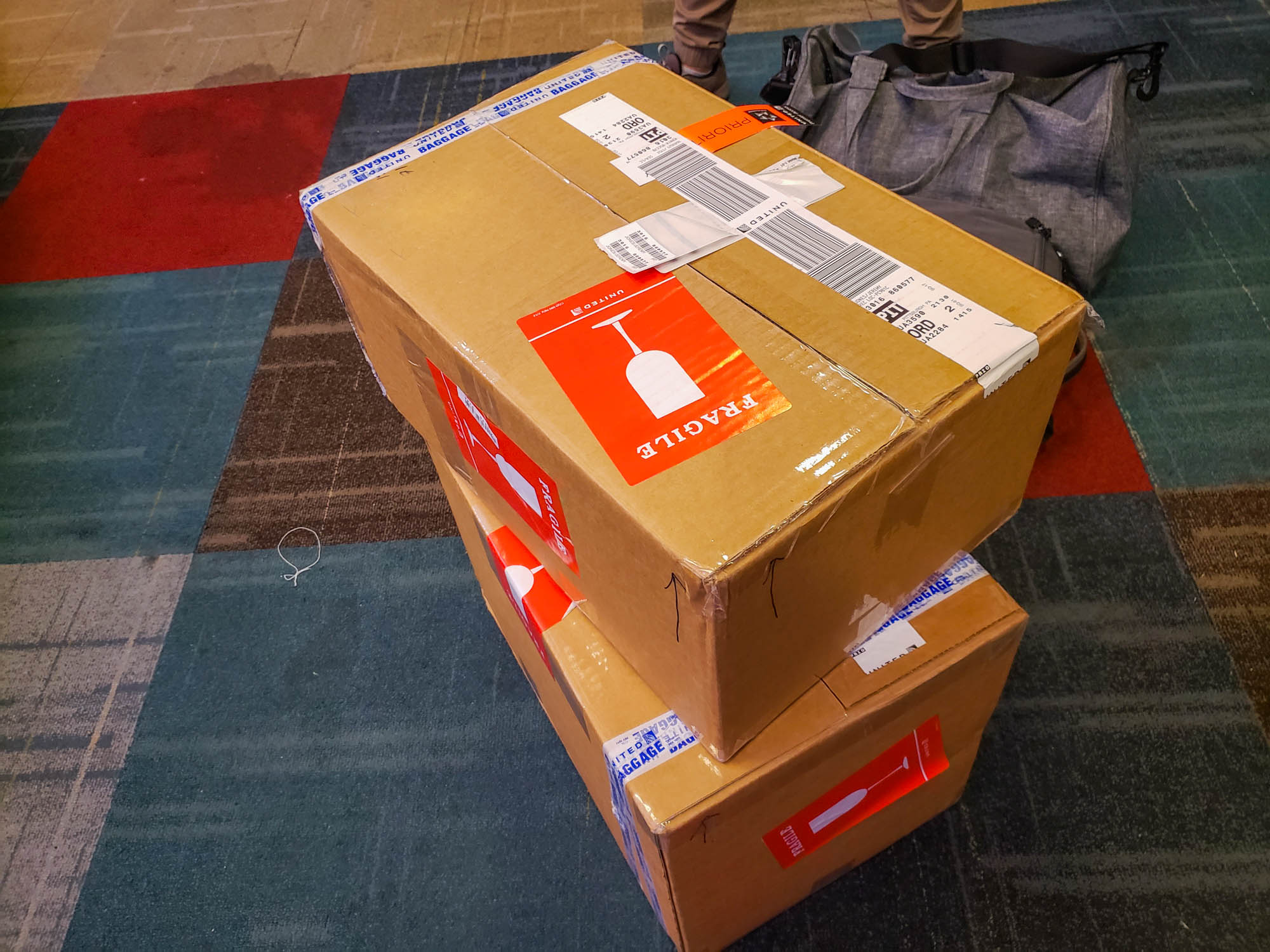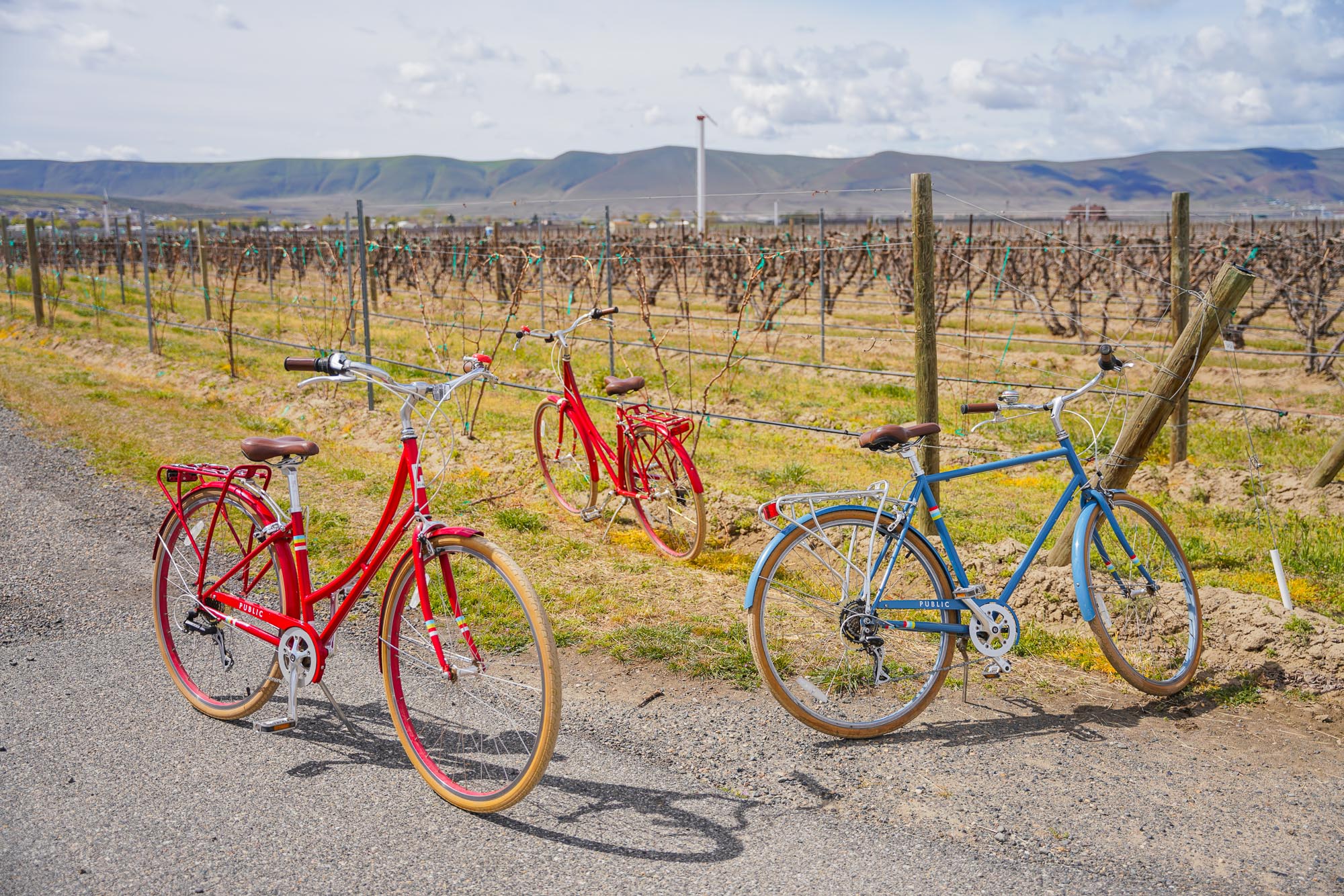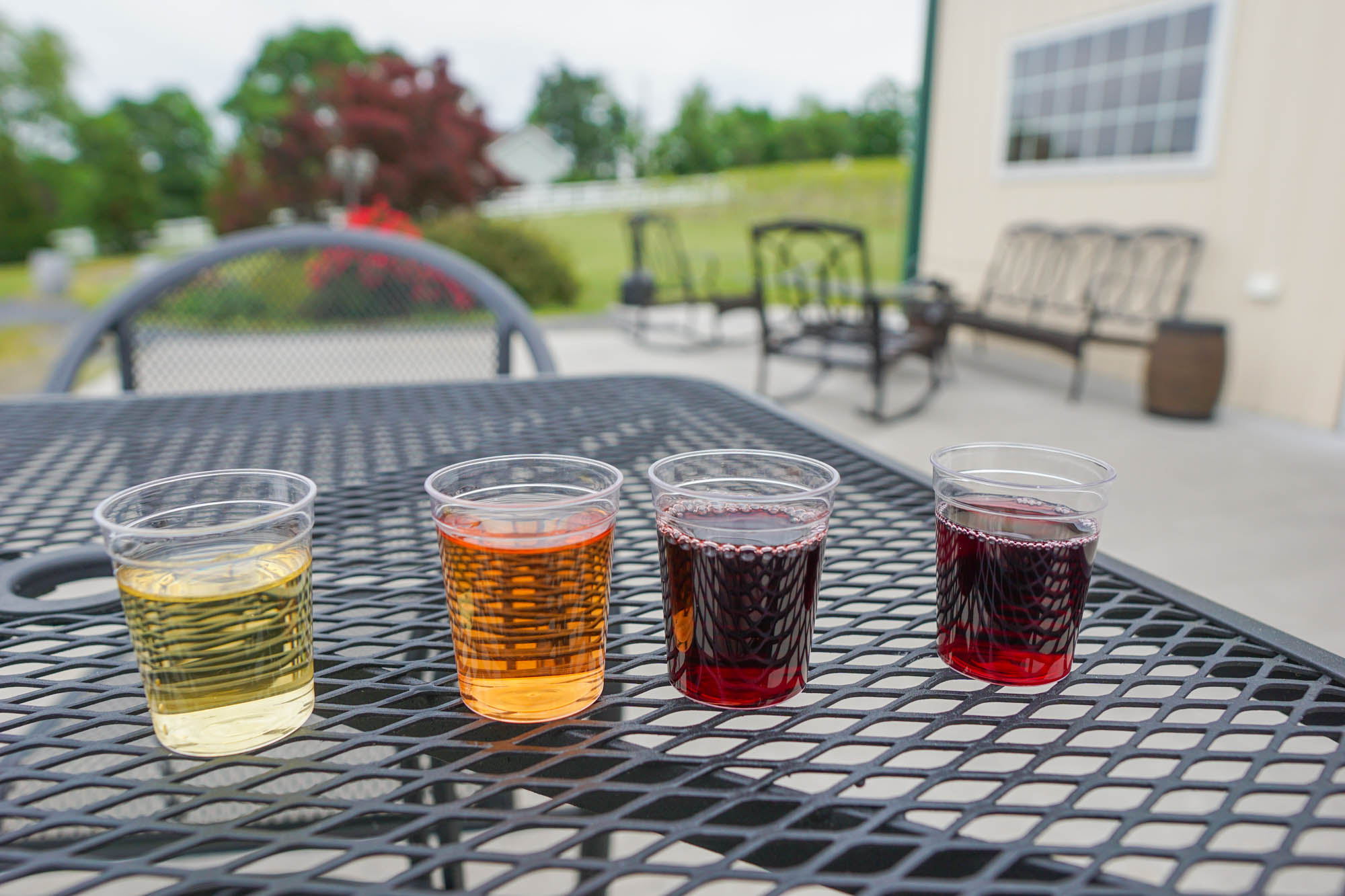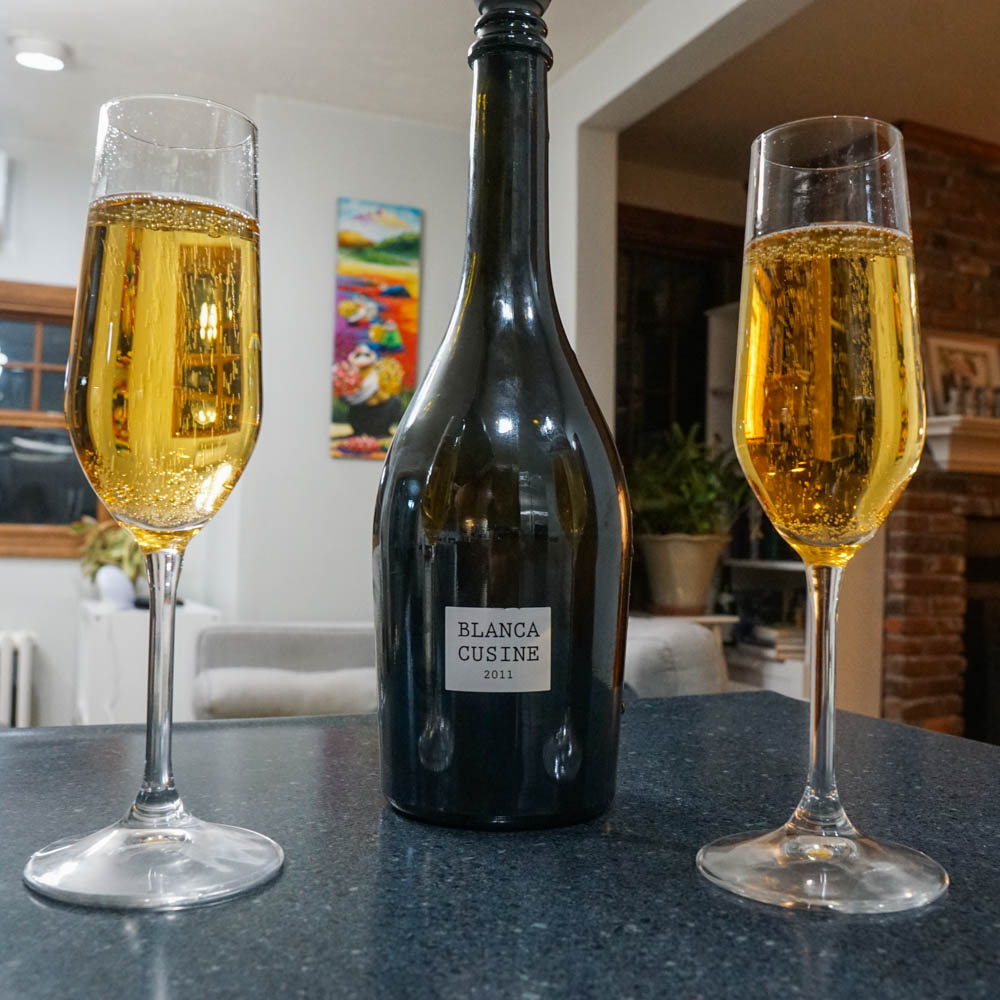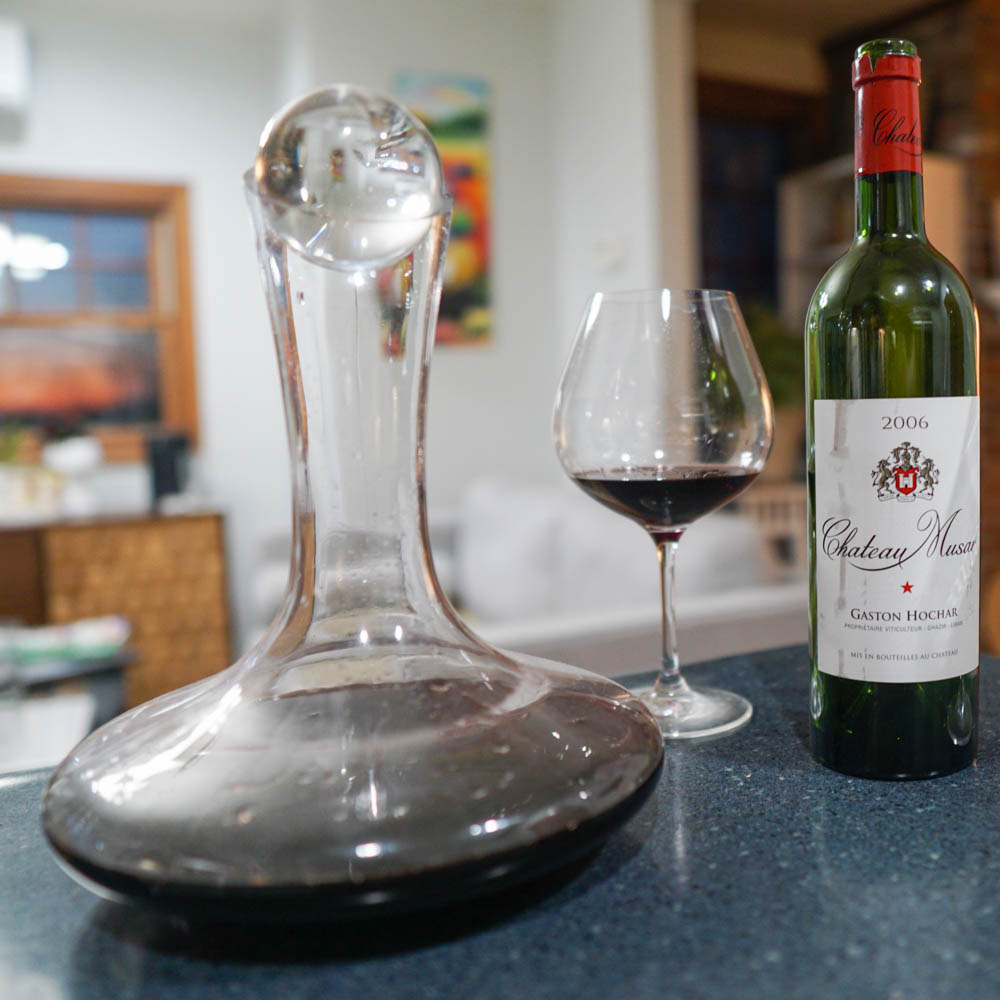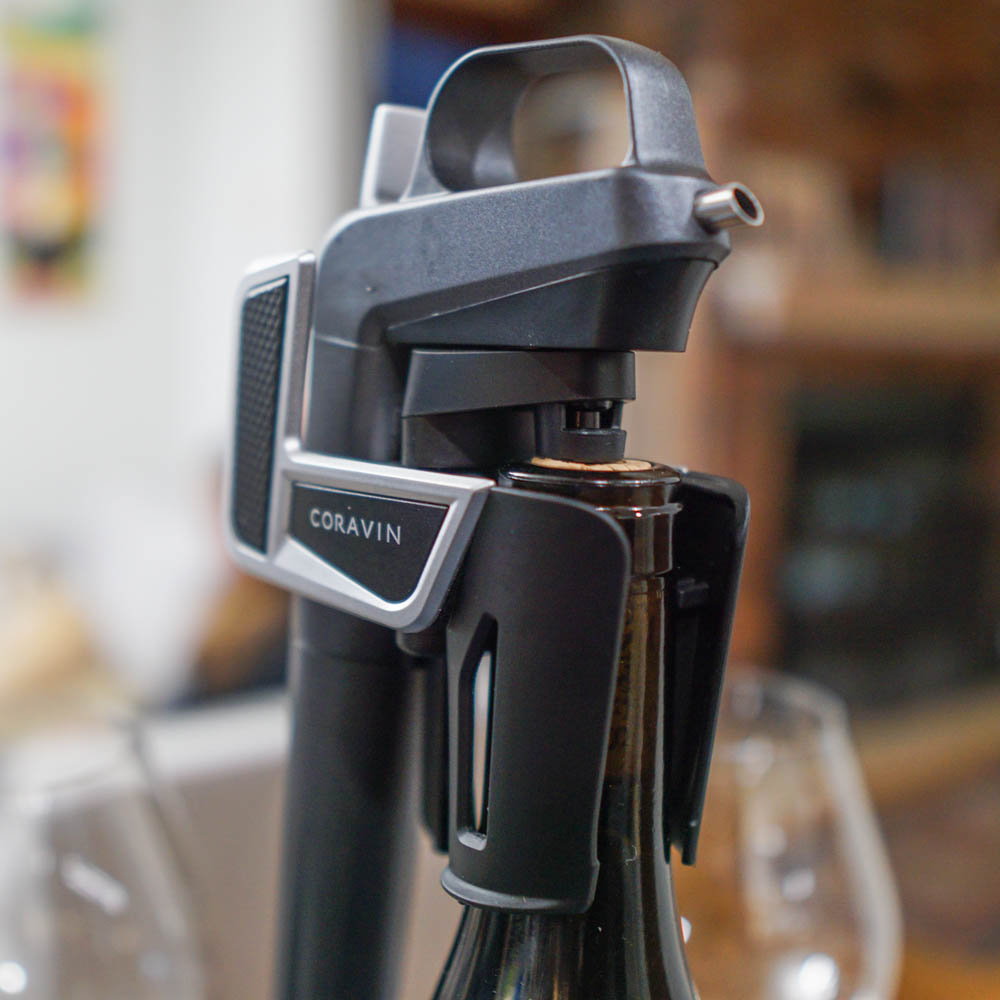Published by Jeremy.
Disclaimers: We use demographic data, email opt-ins, display advertising, and affiliate links to operate this site. Please review our Terms and Conditions for more information. This website is intended for those of legal drinking age in your jurisdiction.
When it comes to planning a wine trip, we'll be the first to admit that there is a lot to think about.
From determining where you want to go, where you want to stay, how to find wineries to visit, buying wine, and doing other non-wine activities, the amount of information you may have to sort through can be quite robust.
We are no strangers to planning wine trips from the simplest day tour when in a city near a wine region all the way to researching multi-day itineraries in some of the top regions of the world.
In this one, we thought we'd take a step back and share our process for planning wine trips and break it down in a step-by-step guide for those looking for the same.
But as we recognize that not everyone may be as insanely into wine as we are, we also wanted to break down recommendations for those who simply want to go wine tasting without a ton of planning while also providing robust tips for those who make take more time to find the best of the best.
Suffice it to say, we hope to have something for everyone here!
Planning What Wine Region to Visit
Before doing anything at all in planning a wine trip, you need to decide on what region you want to visit outright.
This is often an easy decision as most travelers have another reason for traveling beyond wine. For example, you are planning a trip to Italy, will be heading to Florence, and figure if you are close to Chianti, you may go out tasting on a day trip. On the more deliberate side of the travel spectrum, odds are good you have a region you like from past tastings and are making a conscious decision to travel to a favorite region too.
In this section, we're not going to tell you what wine region you should visit. If you like the wine or simply happen to be close to a famous region, we really can't argue with whatever criteria you use to select where to go.
But what we would like to highlight here is that many of the famous wine regions you may consider visiting could have several Protected Designation of Origin (PDO) sub-regions you may want to look into, or they may be close to another unique wine region outright. This is especially worth considering if you are traveling in a rental car because perhaps a short drive away may be something rather exciting you had no idea was there!
For example, if you plan a trip to Napa, do not overlook Sonoma roughly 30 minutes away. If visiting Piedmont for Barolo, don't overlook Barbaresco, Asti, Dolcetto, or Gavi all within driving distance. If you are visiting Bordeaux, keep in mind that the characteristics of wines from the left bank, right bank, and Entre-Deux-Mers can be vastly different (for example, a Cab heavy red from the left bank vs. dessert wine from Sauternes or Barsac).
While you may have a goal in mind with a particular wine trip, broaden your horizons and see what else is nearby because more often than not it is the unsuspecting finds that always end up highlights! At the very least, taking a broad look at what else may be available will help you avoid missing something you will regret in retrospect (when we visited Bordeaux without a car, we explored Entre-Deux-Mers via a public tour but still regret missing out on Sauternes and/or Barsac just a few minutes away, for example).
Likewise, we often like to hit a mix of producer types and sizes when we travel. We almost always visit the region's most famous producers to see what the big players are doing (and their rather gorgeous estates, typically), small boutique producers to see what they're up to, and everything in between. A well crafted itinerary, to us at least, has a mix of everything!
- It is also worth noting that many wineries may not be open year-round. We have seen many wine regions, especially colder areas, where tours cease over winter- partly because there could be accessibility concerns for visitors. Likewise, some wineries may be too busy during harvest months to keep their tasting rooms open (it is all hands on deck these weeks!), so tastings may also be halted. As such, you may want to check these key details before booking a plane ticket to ensure that you can visit wineries for a tasting at all!
Planning Where to Stay in a Wine Region
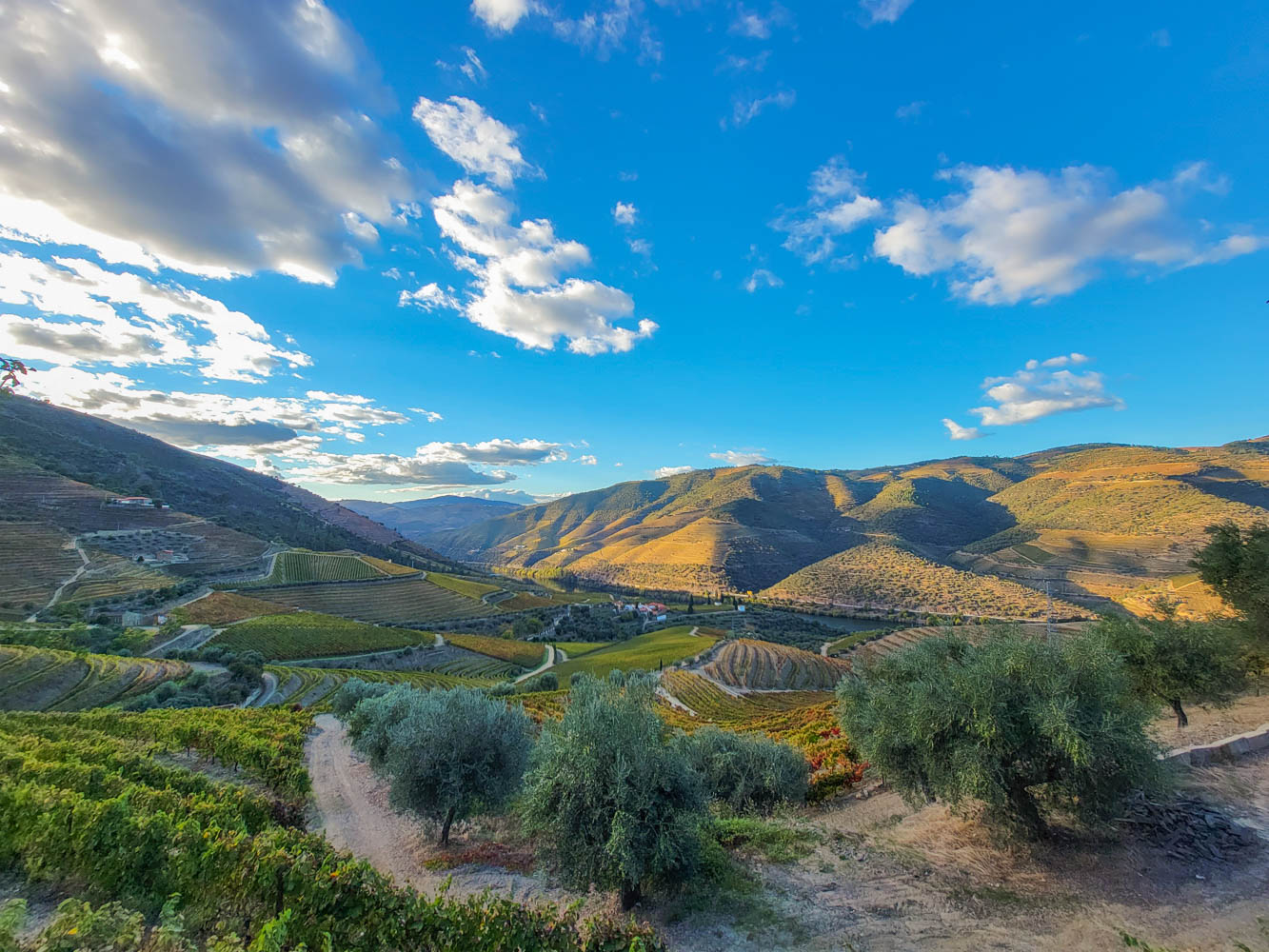
So, let's say you now have a wine region(s) in mind. What next? You will want to give some time thinking about where you'll want to stay during your visit.
One of the downsides of visiting wine regions is that they are often remote. Apart from say, Vienna, Austria (the only capital city in the world with commercial vineyards within the city limits), odds are good you are going to have to head towards incredibly rural places to visit vineyards- especially if you are seeking out a specific region to explore and not just enjoying what happens to be nearby an existing itinerary.
Finding a place to stay in these wine regions typically revolves around three key styles- each with its own respective accommodation types, price points, logistics, and concerns:
- Staying a hotel or apartment rental in a city/village – Typically the best option for those who want a city or village setting for their base. These locations often come with more accommodation options (hotels and apartments) plus local restaurants/activities to enjoy but may require a sufficient drive to reach the wineries depending on the region.
- Those who wish to explore wine regions via public or private tours may find this option worthwhile as tours often pick up in city/village centers (you may want to confirm this before booking any accommodation, too). That said, smaller villages may look good on paper for proximity, but some may ultimately offer sparse amenities and some parking/driving concerns- especially in Europe.
- Staying at a rural apartment or bed & breakfast within a wine region proper – These are often standalone accommodations inside wine regions, but may not be affiliated with any particular winery. Prices may be higher than in nearby villages (some can be lower!) and get you right near the action. The trade-off is typically fewer amenities in not being within/near a town.
- Those who wish to stay at a rural accommodation likely will have to have a rental car as travel logistics are often difficult if not impossible.
- Staying at a winery's on-site hotel or B&B – A similar subset as the category above, but these are often properties managed by vineyards outright. These tend to be the most expensive but offer more experiences that could be tied to the property outright (e.g. tastings at dinner, property tours, higher-end meals, etc.). Finding these can be tricky as wineries sometimes do not advertise their accommodations on 3rd party booking services- so you may simply stumble upon something interesting when looking for places to taste!
- Visitors here likely will only be visiting via rental car as well.
Ultimately, a lot of this comes down to personal preference. Are you traveling on a budget? Do you want to try multiple restaurants in a town or are you okay eating at the same property every night? Do you want a high-end winery experience or are you okay with being close (still out in wine country) but in an unaffiliated property?
We like to travel in all of these accommodation types when visiting wine regions, but we often make our base in towns to have a variety of things to do (and eat) when not tasting. Where there is good wine, good food often follows after all. But that being said, if the closest town is 45, 60, or 75 minutes away from the wine region proper, we may start to pause because that adds a lot of driving on any given day. Here, we may take a tradeoff to simply be closer to our final destination.
Where you fall on this spectrum is up to you, but odds are good it will be within one of these three broad categories.
Self-Guided vs Group Tours vs Private Guides vs Multi-Day Tours
When it comes to visiting wineries in famous wine regions, you likely have four scenarios you may fall into for reaching any given property outright:
- Self-Guided: In a self-guided option you are on your own to drive yourself in your own vehicle or rental car to a winery for a tasting. This is often the preferred option in wine regions with developed infrastructure (e.g. Finger Lakes, Napa) and for those who are serious wine consumers exploring less developed locations (e.g. Douro Valley, etc). Remember that many countries have low blood alcohol laws when driving, so you may need to be prepared to spit most of your wine when tasting if you plan to drive after. Be safe!
- Public Group Tours: For those who don't want to drive, or if you're exploring a region that is not super hospitable for drivers, tours may be your answer. First up are group tours which are typically entry-level tours with a driver guide that takes you to a handful of wineries on a set itinerary. These are great for those who are the most flexible on what wineries they want to see and sharing a tour with others typically means the price is reasonable. Places like Viator can be a good start to finding general 3rd party tours in major wine regions without knowing local companies outright (these companies source local tours under their own branding, thus taking out some of the research on your behalf).
- Private Guided Tours: For those who want to take a tour but have a stronger interest in wine over the often broad group tours, many wine regions have private guided tours designed by wine experts- many of whom are local. These tours can be much more expensive due to being private, but also give options to customize itineraries based on your interests. If you have a bit of money to splurge and want the best experience, these can be a great option for a stellar day out. The downside is having to vet reviews and find companies that fit your needs and interests.
- Multi-Day Tours: These are generally multi-day itineraries that allow guests to dive deeply within a wine region(s). These are often arranged by private companies with specific themes (say, a wine bar in your home city arranging a destination trip to a favorite wine region), but local companies within wine regions often offer multi-day packages as well (river cruises within wine regions are popular, too!). But much like private tours, these can get expensive in a hurry but could be a great option for those who want to dive into a wine region and not have to plan much in advance.
Ultimately, there are several ways to visit wineries when you travel. There is no wrong travel style, but it really comes down all to your interest levels, how much you want to plan, and the price. We often go for self-guided exploration to save on cost, but also have to keep in mind this means driving within rural areas, in foreign countries, and while wine tasting. When we want to splurge, we tend to pick private single-day trips to get access to wineries we may not know about and/or wineries we could not access on our own. We'd love to do multi-day private tours one day, but often find them to be too expensive over DIY for our tastes.
At the end of the day, whatever style of travel you like is all that matters, so whatever tour type you need to get into a winery is ultimately the best!
- If you plan on driving in an international destination, make sure to pick up travel insurance that covers rentals!
How to Pick Wineries for Self-Guided Wine Tours
Generally speaking, if you have opted to go the self-guided route for exploring a wine region this means a few things to start. First, you have a rental car booked for your stay and are okay with all the issues of wine tasting and driving. Second, you may have a slightly elevated interest in wine tasting overall (this may vary, but for the more casual wine taster, if you're simply nearby and want to try some wines as a day trip from a nearby city/town it is almost always easier to book a tour).
The question here is that it is sometimes difficult finding wineries to check out to begin with. This means parsing through dozens of wineries within a region, perhaps checking reviews and tasting notes for quality, cross-referencing opening hours and (likely) reservation requirements, wading through multiple tasting flight options, and of course weighing the price against your budget to name a few.
The problem is, picking wineries to visit is hard, and there is no one-size-fits-all approach to finding them. When we looked up wineries in Piedmont from renowned writers like Jancis Robinson, we simply found that most of the wineries were not open to the public for tourism. They're on our radar to try if we find any in a store or wine bar, of course, but does us little good as travelers. Looking up wineries on Google maps is a great way to find places on any route, but you may be relying on user-generated reviews for any subsequent analysis there.
For us, there are two camps we would recommend when it comes to finding wineries:
The first is to simply find a major wine resource you like, check to see if they have any wine region guides, and start sourcing through wineries they recommend. Sites like these could be like our winery guides here at The Grape Pursuit, Wine Enthusiast, other bloggers or wine writers, and more. Regional tourist offices are also great for highlighting area wineries that are open for visitors (plus periodic events!), but may not make a distinction of quality in the slightest.
The second is to take a deep dive into finding wineries by researching top-reviewed bottles on places like Vivino, Wine-Searcher, Robert Parker, etc., looking through wineries one by one to see if they offer tours, and then prioritizing which ones you may want to visit by their selection, prices, availability, etc. Will this be a better experience than simply looking at a curated list on a single source and saying “that sounds good!”, it depends. But it certainly gives you a lot more to think about when looking for wineries, and while this is something we personally do for every wine trip, it is indeed a lot of work.
If you want to read about wineries we've personally visited, check out some of the following guides:
- Douro Valley, Portugal
- Finger Lakes, New York
- Napa and Sonoma, California
- Shenandoah, Virginia
- Tri-Cities, Washington
- Seattle, Washington
- …more regions will be added soon!
Be Aware of Timings if Visiting Multiple Wineries in a Day
Before you head off and book a bunch of wine tastings, we'd be remiss if we did not caution about timings for tastings as these, coupled with some possibly long distances between wineries, means that being strategic about times could work in your favor.
This is something that varies region by region. In Piedmont, Italy, for example, many wineries are located within 30 minutes of each other (or far, far less). In this respect, it is somewhat easy to look at wineries you have on your shortlist, see how far apart they are, and add in a reasonable period of buffer between tastings to drive between any two properties.
In other regions, this is easier said than done. To go from one side of any given lake in the Finger Lakes to the other may take 45 minutes or more. If you want to drive to a new lake entirely, you may be looking at an hour or more. If you are crossing the river in the Douro Valley, there are only two bridges and a lot of windy, twisty roads you may have to navigate that could push your travel times well over 75 minutes if you aren't strategic about your winery choices.
As such, once you have your shortlist of wineries you want to book, you'll want to take some time plotting out where they are on a map, seeing how long their respective tours/tastings are, how far they are apart from each other, and see if you can be strategic in your bookings to couple close vineyards together on similar days and/or morning/afternoon tasting sessions.
Much like finding wineries to visit, this is sometimes one of the most frustrating parts- which is again why we recommend those who are only casual wine fans to simply book a wine tour and call it a day. For everyone else, the logistics of getting around can truly impact how many wineries you can visit on any given day.
- A few final note about reservations: Some wine regions are a lot more flexible for walk-in tastings than others. If you are visiting a wine region that almost exclusively requires reservations for tours (which the industry seems to be moving towards- especially for higher-end estates), book early. When a prized winery books up you may be left with openings at odd hours for your itinerary or you may not be able to get in at all. This may add yet another issue to work around in addition to the above logistics.
- Likewise, do not assume that 100% of tours will be in English (especially in countries where English isn't the primary language). While most wineries do offer tours in English, they may only offer them at set times. This is true for other non-local languages where tours may be even more limited than English ones. As such, this may add another wrinkle in planning to accommodate a good time, language, and availability.
- Finally, tastings can be quite expensive. Some may offer free sips. Others may charge $100 per person or more. If you hit several wineries in the course of a day, do not be surprised if things start getting quite expensive rather quickly. Always cross-reference price with your budget when going wine tasting!
Be Prepared to Shop for Wine (and Maybe Ship It!)
When you visit a winery, odds are good they will offer sales on-site for those who want to take bottles home with them. Some wineries may also offer shipping options for those who want to purchase bottles (of an appreciable volume) and have them sent home.
Here, there are several things you may want to think about before making a purchase:
- If you are traveling internationally, most countries have a max amount of wine you can bring in without having to pay duty. In the USA, this is officially one (1) liter per person; however, some customs agents generally don't care as long as it is within a reasonable amount for personal consumption- we've brought home several cases before without issue. This is a risk that we may get pulled aside to pay duty taxes, but it is one we take all the same.
- Whether you are traveling domestically or internationally, if you have a flight you have weight limit concerns to keep in mind as well. Generally, a bottle of wine weighs about 2.65 pounds pending bottle shape. So if your suitcase is 30 lbs departing and you have a 50 lb weight limit, you are limited to about seven bottles of wine you can squeeze in there (I've fit more, but only when we had extra weight due to status). Wine Skins are great added security for wine in a checked bag (you can read our full Wine Skins review here with packing tips), and if you can check additional bags some friendly wineries may give you a shipping box to use as well which have always served us well as a second checked bag.
- Some wineries can ship wine for you; however, in our experience, direct shipping from a winery is best done within the same country for cost concerns (e.g. domestic producers). International wineries may have added expenses for shipping costs, perhaps duty/taxes, and more that may price you out of a sale rather quickly.
- Some wineries may also be able to ship wine from a local distributor in your home country, too. These tend to be bottles already in a warehouse in your home country (albeit possibly only a small selection of a winery's portfolio) and can ship for much more reasonable rates. That being said, do not be surprised if the per-bottle price is much higher here as the importer and distributor's profits are likely added in here. (In Italy, for example, some wineries have given local price sheets to buy at the winery and USA price sheets for stateside shipping.) Still, you may come out ahead over shipping from abroad in some cases by doing this- international shipping is no joke!
Overall, you have several options at your disposal when it comes to buying wine. But if you are looking to bring home bottles in your own suitcases, you may need to plan ahead by either buying a dedicated wine suitcase, using padded Wine Skins for putting wine in your checked luggage, or getting a shipping box from a friendly winery if you can check an extra bag for free or a reasonable cost.
Finally, you may want to see if the winery has information about distribution in the state/city you are from. They may be able to tell you if their wines are available locally such that you could pick a bottle up when you arrive home. While we have found some wineries we have visited at home to shop more later, we have to admit this is often skewed either toward large producers or, for boutique brands, their entry-level wines. Premium bottles very rarely get distributed at any appreciable scale. So if you don't think you can get a premium bottle anywhere than at the winery, buy it!
Include Non-Wine Activities in Your Day (Eating, Hiking, Exploring)
One important thing to plan for during any visit to wine regions is to engage in other activities that do not revolve solely around drinking wine at a winery.
Part of this is by necessity- you will have to eat at some point be it for lunch and/or dinner. But the other part is that most of the world's top wine regions are also famous as tourist destinations for other reasons altogether. (Another part may be simply that you are traveling with someone who doesn't drink wine and needs other things to do not to get bored!)
Piedmont, Italy, may be known as the home of great Barolo and delightful sparkling wines, but they are a rich hazelnut-growing region, truffle producer, and of course, a hub for all things gastronomy. The Douro Valley is as beautiful for its gorges as much as it is for wine, so a river cruise may be something you put on your radar. Mendoza, Argentina has fun activities such as renting a bike to ride through the vineyards while stopping at select spots for walk-in tastings. The Finger Lakes region is a gem for hiking at places like Watkins Glen and Robert H. Treman State Park, and the waterfalls in upstate New York are must-sees, too!
Some wineries also offer their own in-house activities for guests wanting to do more beyond simply drinking wine. Some wineries may own horses and take you out for a ride in the vineyard. Others have their grounds open for hikes. Some may have interactive experiences during harvest, too!
To put it simply, be sure to research other activities when visiting wine regions as wine is often not the only highlight you should check out on any given trip. This is especially critical if you happen to be traveling with others who are perhaps less interested in wine than you are and could use a break from tastings.
Recognize You Can't Do It All
To end this one, we have one final point that may target the more extreme wine travelers (like us). This one may be obvious, but it still needs to be said- it is impossible to do it all.
There are tens of thousands of wineries worldwide, and in any given region there could be dozens or hundreds that you may be able to explore. Unless you live within a region and have ample time to take a deep dive, it is simply impossible to get to every winery you hope to visit in a single trip.
Some may be closed. Some may be booked. But for the vast majority of wineries we've had to miss over the years, it simply was because we didn't have enough time to do them all, and this is completely okay. The good news is you can always go back to a region you love, and the wineries will (hopefully) still be there waiting to welcome you with a glass of something delicious!
Overall, there are a number of things to think about when planning a wine vacation. Whether you dive in head first for a robust wine trip or simply pick a day tour for a quick visit to the wine regions, you really can't go wrong- insofar as a glass of wine ends up in your hand, at least!
Do you have any tips to share regarding wine travel and planning a wine trip? Comment below to share!
Upgrade Your Home Wine Bar
Need to upgrade your wine bar? Grab some new wine accessories:

